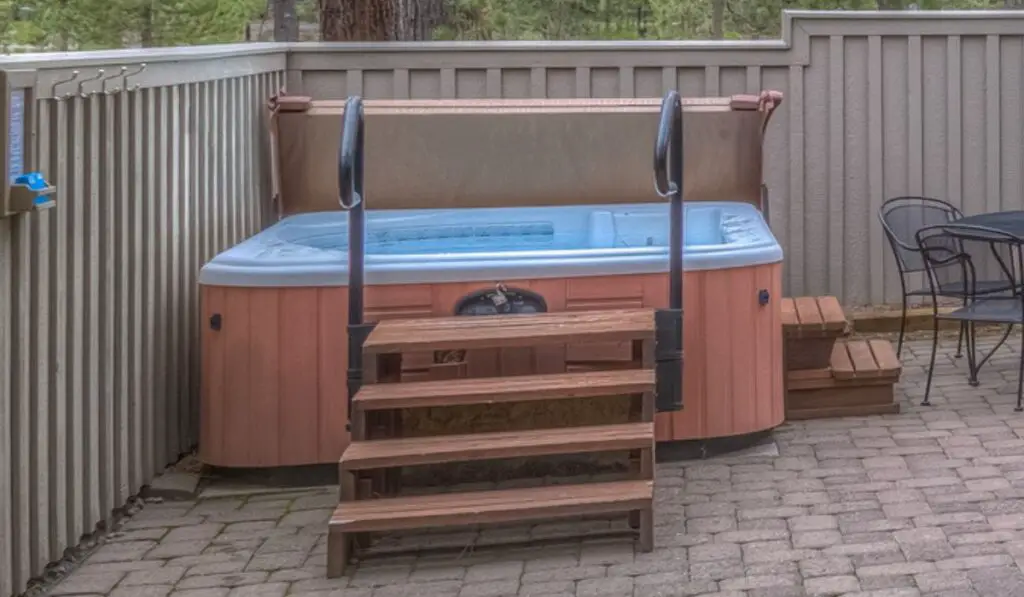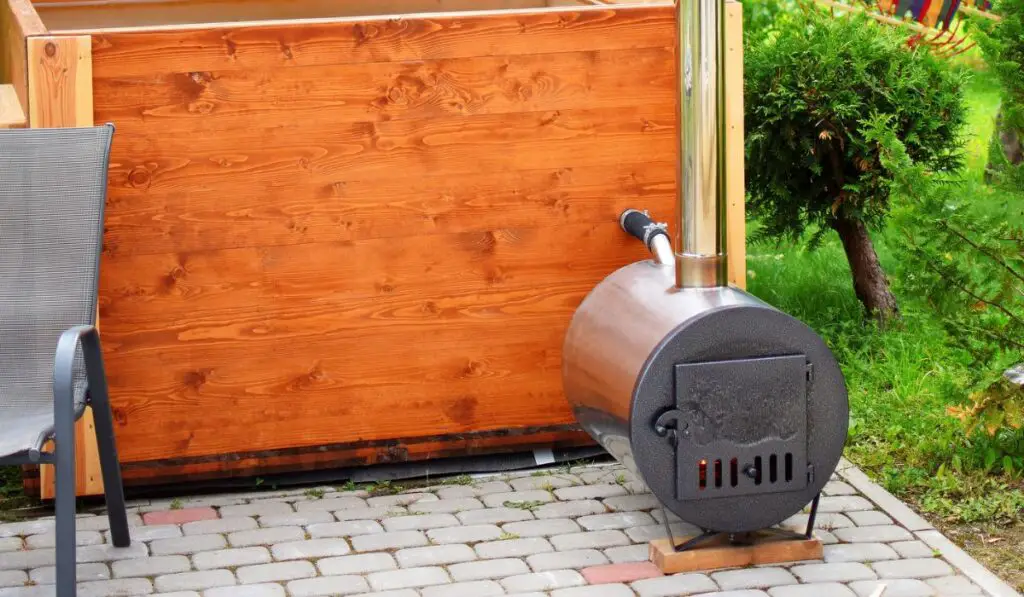Deciding what to place your hot tub on can be stressful and time consuming. Simply placing the hot tub on the ground won’t do with the way soil shifts and sinks. Plus, you don’t want to make a mistake and regret it later, which could be costly. That is where pavers come in handy.
When it comes to hot tub bases, pavers have many advantages over concrete slabs and decks. They’re cheaper, have a higher weight capacity, and are more resistant to weather. It’s best to use pavers that are at least 2 inches thick, rated for a driveway, and completely flat with no grooves or ridges.
There are many benefits to using pavers over other forms of hot tub bases, like their adaptability, ease of install, and cost effectiveness. Pavers are also made with multiple kinds of materials that each have their own advantages and aesthetic appeal. Let’s take a detailed look at why pavers are so useful and the process of putting a hot tub on pavers.
Benefits of Putting a Hot Tub on Pavers

Pavers are one of the most popular hot tub bases out there, and that is no surprise considering the benefits:
High Weight Capacity
Pavers can support the extensive weight for any sized hot tub, given that the proper estimations and thickness of the pavers are considered. They can hold more than 10 times their weight, which is significantly more than a concrete slab.
This gives you the flexibility to use them with larger models that can’t go on other surfaces like decks. So for something as heavy as an eight-person acrylic hot tub, pavers are the way to go.
Durable Materials
Pavers are incredibly durable and made from high-density materials like concrete, marble or flagstone. They are resistant to salt scaling if you have a salt hot tub, while concrete slabs are not.
They can last decades, unlike a deck that decays and warps as time passes. Pavers are weather resistant from heat to cold and can withstand even harsh northern winters.
Accessible
A hot tub requires electricity and plumbing to operate, which usually has the cables and pipes buried underneath the hot tub itself. Having the hot tub on pavers allows easy removal of the required pavers to fix the problem only to put them back once you are done. A concrete slab cannot be moved, making any maintenance or repair needed incredibly difficult.
Cost Effective
Building a deck or reinforcing a current one can be both time consuming and expensive, but placing concrete pavers down to support the hot tub can take less than a day. They’re also affordable at roughly $3 to $6 per square foot.
In the case of a large, six-to-eight-seat hot tub, that is around $60 to $100 for the entire paver base, which is significantly cheaper than a concrete slab or deck.
Customizable
From different colors to patterns, with pavers you can choose whatever design and layout you like around the hot tub. There are also a variety of different kinds of pavers such as cobblestone, that can give an old European feel to a backyard.
With pavers, you aren’t limited to a single square slab of rock and can create any design around the hot tub that fits your unique backyard.
Immediate Use
You can use pavers immediately, unlike concrete slabs which require a 28-day wait for the base to cure. Once the pavers are laid down and flat, your hot tub can be used right away.
How Do You Install a Hot Tub With Pavers?
While pavers offer a wide variety of benefits, there are a few things that need to be done in order to correctly install them.
Leveling
Making sure the pavers are laid down completely level is extremely important, or else the shell of your hot tub can crack. To do so, level the surface before placing the pavers down.
Once the surface is flat, with sand, gravel or concrete, you can then place the pavers. Check once more to make sure they are all laying flat by using a level.
You also want to make sure the pavers you wish to use are completely flat themselves. This includes any grooves or ridges in the design.
In colder climates, pavers have a tendency to sink into the ground during cycles of freezing and thawing, so to avoid this issue, create a separate solid concrete base.
Dimensions of the Hot Tub
Because hot tubs come in many different sizes, it is important to measure how large the shell will be before building the base of pavers. Expect to leave a few inches of empty space on every side of the hot tub.
You will also want to surround the area around the hot tub to ensure no splashing water gets to the grass.
Having pavers around the hot tub is more aesthetically pleasing instead of having them just drop off. There is also the consideration for the stairs, which require an extra 2 feet. So if your hot tub is 8×8, you’ll have to create an 8×10 base of pavers at minimum.
Before placing the pavers, it’s also important to check for electric, plumbing, or cell phone lines in the vicinity. Hot tubs need to be 5 feet away from any electrical outlets to avoid accidents.
Avoid Plastic Underneath Pavers
Laying down a plastic sheet will not prevent grass from growing, despite popular belief. All plastic does is collect water and cause countless problems later down the line.
If you want grass to stop growing, instead of using plastic, place polymeric sand (on Amazon) down underneath the pavers.
What Kind of Pavers are Best for a Hot Tub?

Pavers come in many types and sizes that can make it difficult to know what you need in order to support your hot tub. The rule of thumb is to make sure they are graded for a driveway, as those are able to hold significant weight. They should be at least 2 inches thick, because thinner ones tend to crack after some time.
With this in mind, you have several options:
- Concrete: A common type of paver that is very durable, versatile and weatherproof, making them good for colder climates.
- Brick: A classic and smooth look that is durable and long lasting.
- Cobblestone: Made from natural stone that looks like old world streets or a European feel.
- Rubber: Created from recycled materials, are essentially maintenance free, and have a non-slip surface.
- Flagstone: Cut from a stone quarry and incredibly durable. They don’t absorb heat, making them great choices for bare feet in hot weather.
